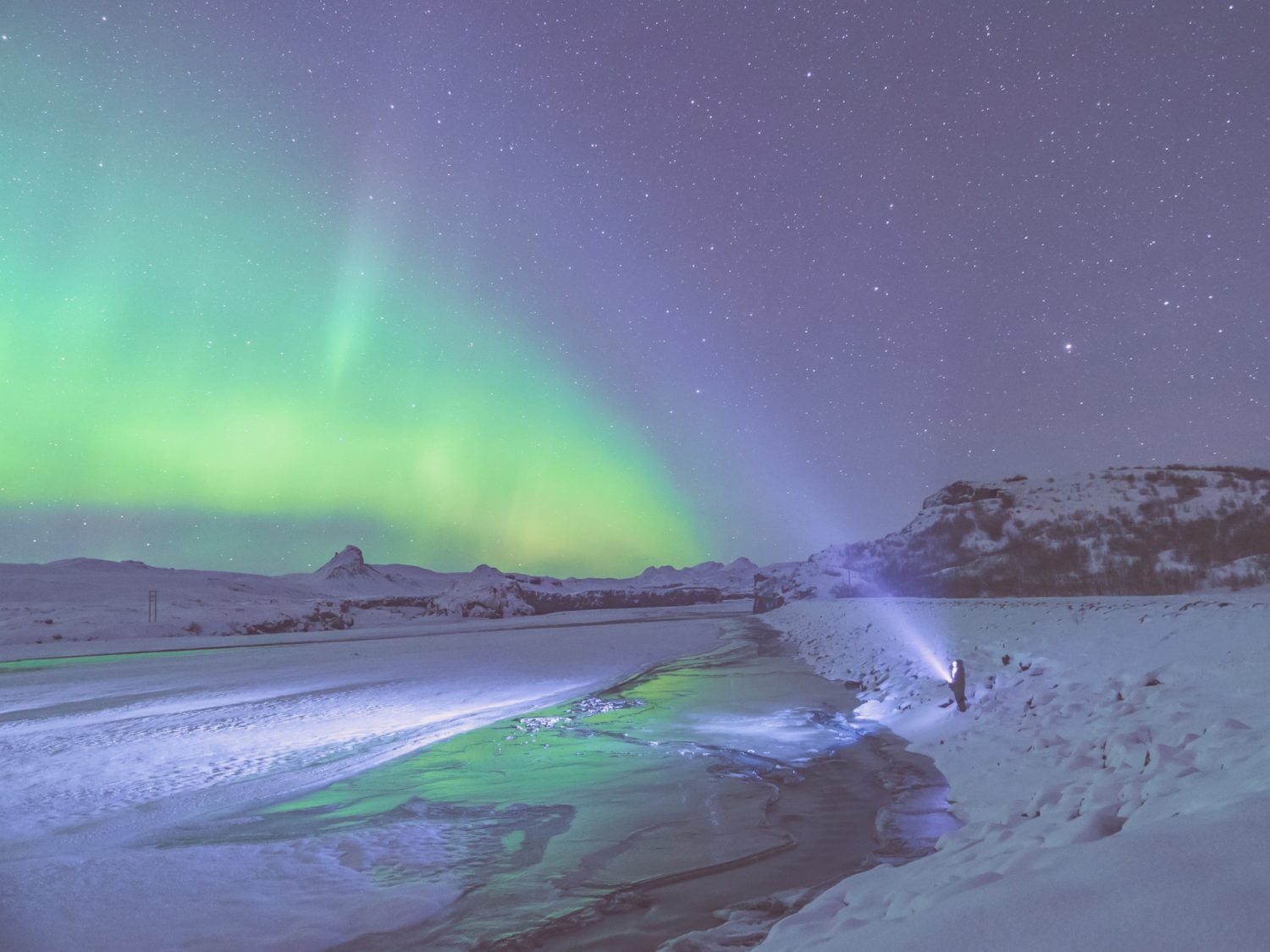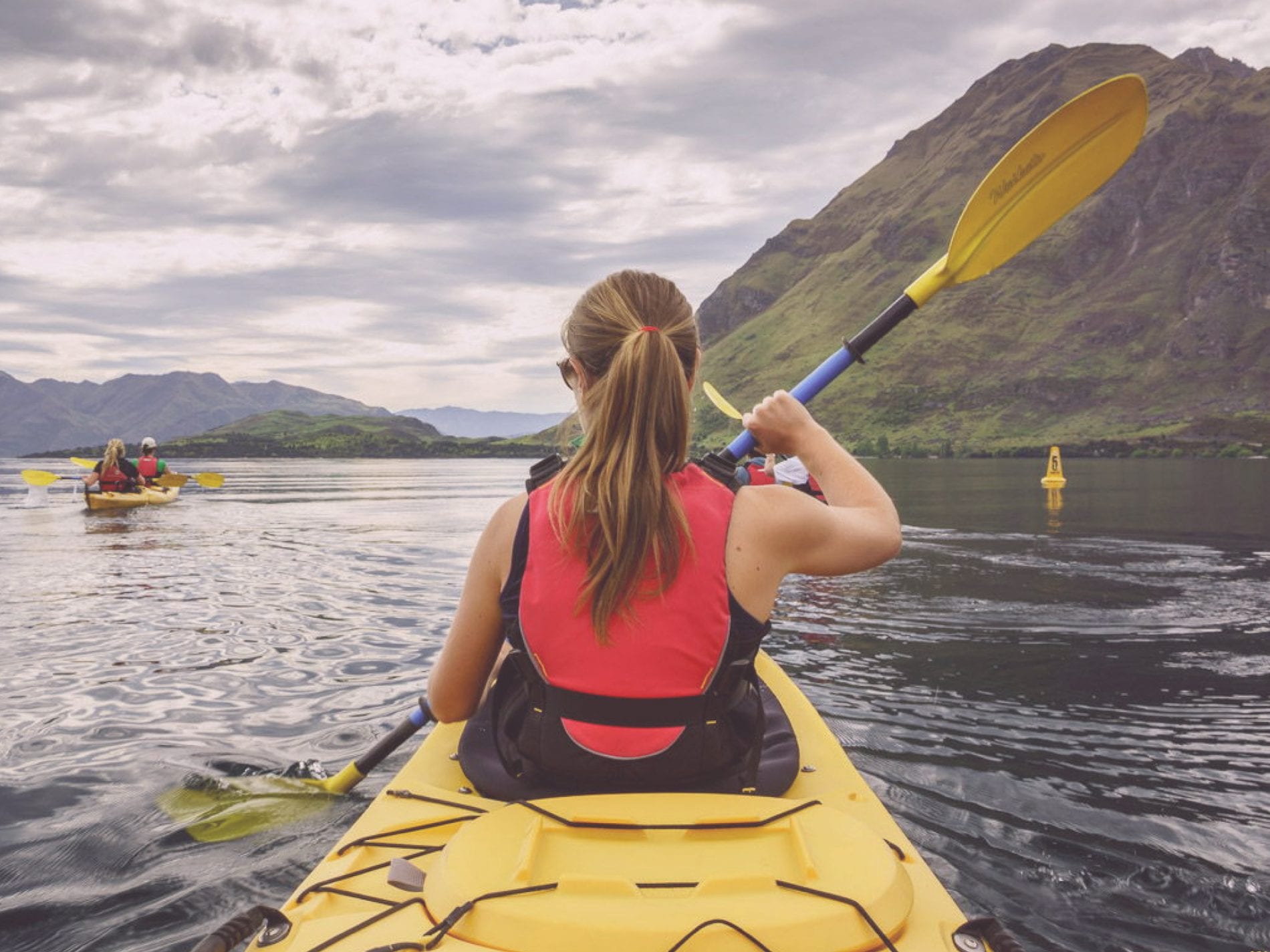The ethereal glow of the northern lights is one of Mother Nature’s most dazzling creations. Visible in the night’s sky of the far north, few people realise that the light is actually a product of collisions between fast-moving electrons speeding about earth’s upper atmosphere and that the different colours come from the different combinations of oxygen and nitrogen that get involved each night.
Pretty cool, no?
If witnessing this astronomical phenomenon also known as the aurora borealis (literally “northern dawn”) is on your 2020 travel bucket list, here are some northern lights travel tips you really should consider before you book your trip.
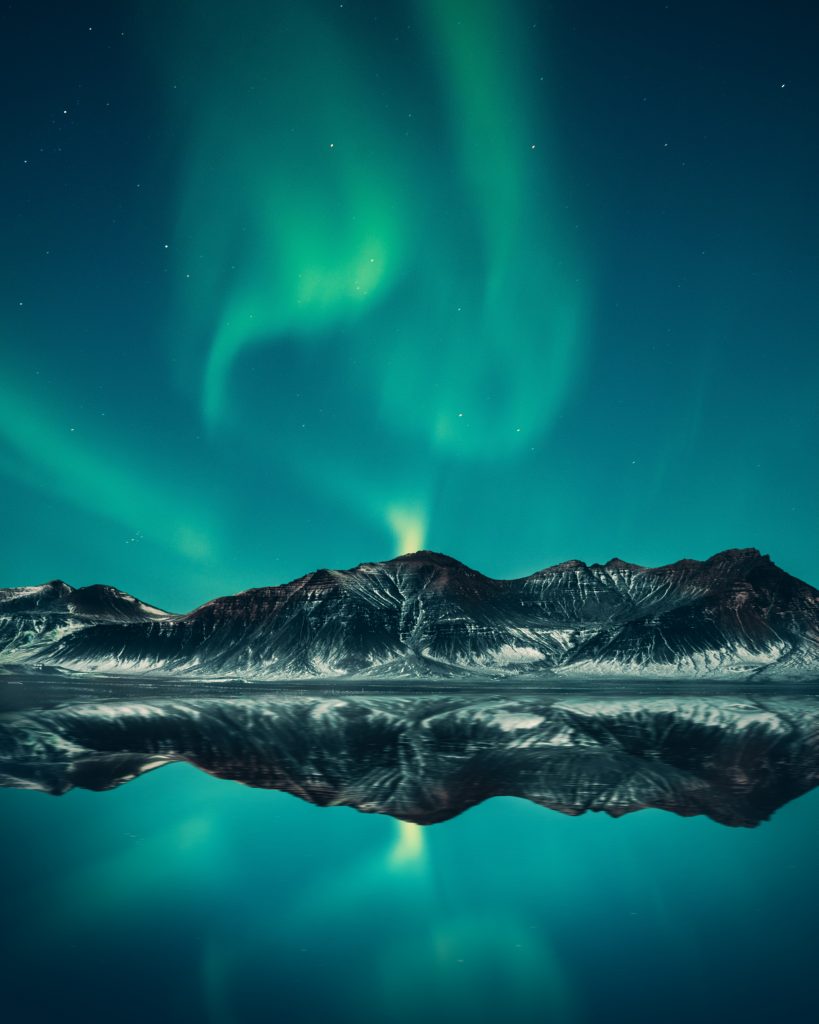
Don’t pick a trip on the likelihood of seeing the Northern Lights, base your decision on the destination
The reality of planning a Northern Lights adventure is that due to adverse weather conditions you might not get to see them. This was the case for me when I visited Finnish Lapland so I can attest to the fact that seeing them isn’t a sure thing! Instead, base your destination choice on what the location has to offer outside of aurora activities.
The fact that there is no single best place to see the northern lights means that the effects of mass tourism are seldom felt when chasing the elusive auroras. The most popular destinations travellers visit to see the northern lights are Finland, Sweden, Iceland, and Norway; if you’re hoping to see the northern lights in 2021 consider more remote locations in these countries as light pollution can reduce aurora visibility.
You can’t really predict when the northern lights will appear, and neither can your guide
Historically, trying to predict when the polar lights would appear was really complex, however, we’re fortunate that today there are a lot of free apps that translate weather and solar activity data to our phones in seconds. This has enabled travellers to plan trips to see the lights knowing the likelihood of actually seeing them weeks in advance.
None the less, the lights are still unpredictable because weather patterns change minute by minute. Just because there is a good chance of aurora activity, doesn’t mean that the weather will play ball.
Check current predictions using My Aurora Forecast, an aurora alert app available on Google Play and the Apple App Store.
READ MORE FAR NORTH TRAVEL GUIDES FROM WANDERLUSTERS
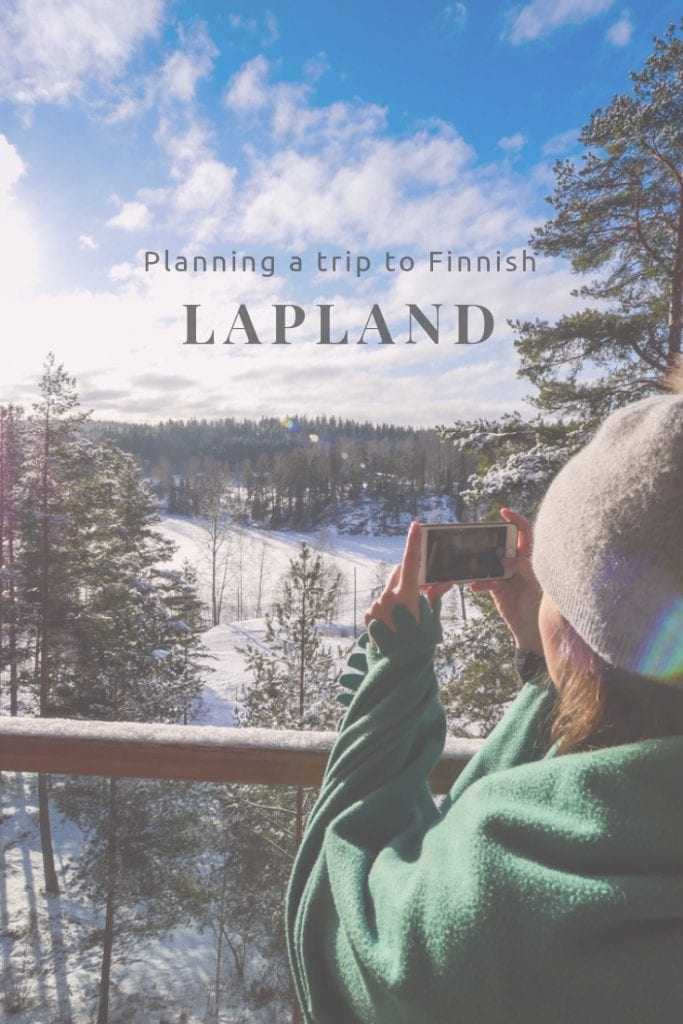
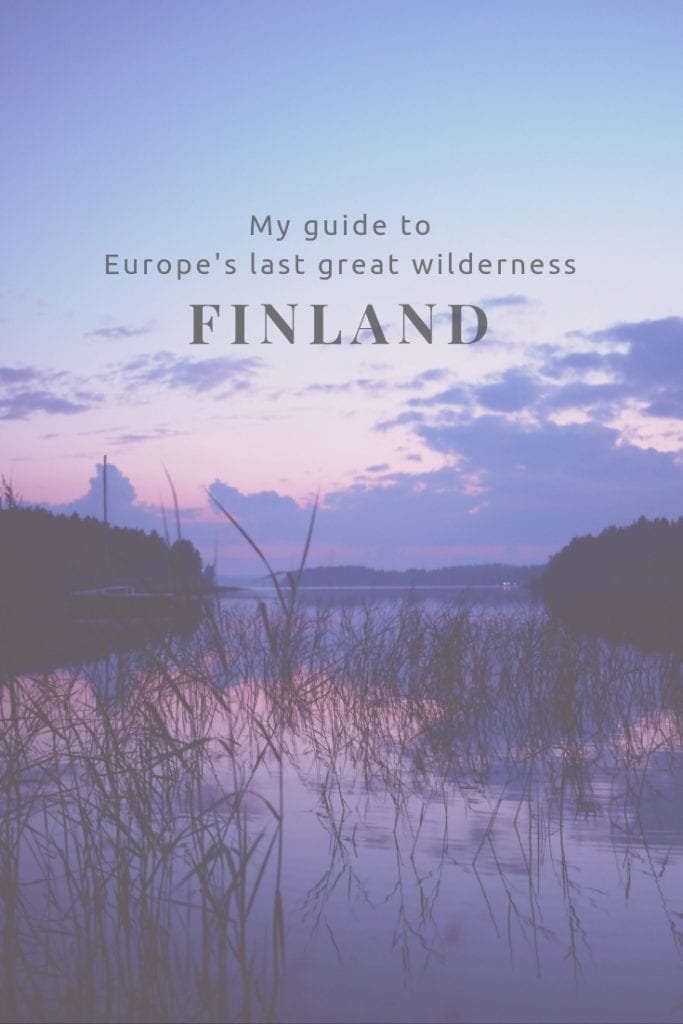
You’ll need to be prepared to put in the effort to catch a glimpse of the aurora borealis
I’ve already mentioned that the weather can make the northern lights unpredictable, however, it’s worth noting that even if the conditions are spot on you will still need to make sure that you’re in the right place at the right time.
It’s a good idea to join an organised tour as the guides will have a number of different sites that they can visit depending on the conditions and the predicted levels of activity. Tours depart late in the evening and you can be out well past midnight so make sure that you wrap up warm!
If you’re not with a guide and want to have the best chance of seeing the polar lights, you can use an Iceland car rental and google maps on your phone to locate north or ask a local – they will know where the lights are most often seen in their area.
Top tips: It’s worth noting that some hotels offer an aurora wake-up call which can be useful if you’ve tried and failed to see the lights previously. Check out this minimalist packing list too.
Light Pollution can affect whether you see the Northern Lights
There’s a common misconception that it has to be cold to see the northern lights, the truth is that they’re actually active all year round, but not visible in the aurora zone during the summer months because this region experiences 24 hours of daylight at this time.
It does, however, need to be dark, and that doesn’t necessarily mean you’ll see them once the sun has gone down, it means that you’re most likely to see them when you’re miles away from any major light pollution so keep this in mind when booking your trip.
Always train your gaze to the north when looking for the Northern Lights
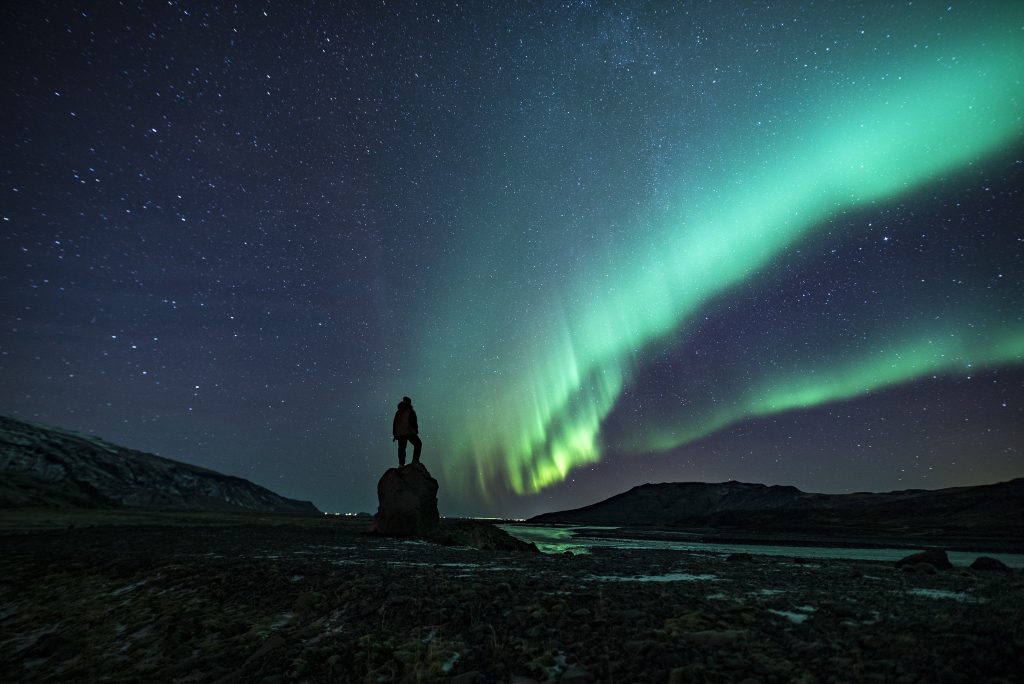
It might sound obvious but regardless of how far north you are, the lights almost always appear from the north so stand and look in that direction when you’re hunting for the aurora.
If you’re not with a guide and want to have the best chance of seeing the polar lights use google maps on your phone to locate north or ask a local – they will know where the lights are most often seen in their area.
The Northern Lights aren’t just green: specific atoms in the atmosphere create specific colours
This is quite a cool fact; the colours of the polar lights depend on whether electrons collide with oxygen or nitrogen, and how energetically. Oxygen gives off a greenish-yellow or red light, while nitrogen generally gives off blue light; the blending of these reactions creates purple, pink, and white.
Sunspot activity affects the frequency and brightness of the northern lights
The northern lights are the product of a complicated interaction between the sun and earth which manifests in earth’s geomagnetic fields and creates the aurora we see from the ground.
Scientists can use this to predict when the lights will appear and how strong they will be as auroras tend to be more frequent and spectacular during high solar sunspot activity.
There are southern lights too
In the same way that the aurora borealis appears around the northern magnetic pole, an aurora also occurs around the southern magnetic pole, known as aurora australis.
In order for it to be seen anywhere other than Antarctica, it has to be very active however when the conditions are right Hobart in Tasmania and the southern tip of New Zealand get the best views.
INSPIRED? PIN THIS TO YOUR TRAVEL PINTEREST BOARD NOW!
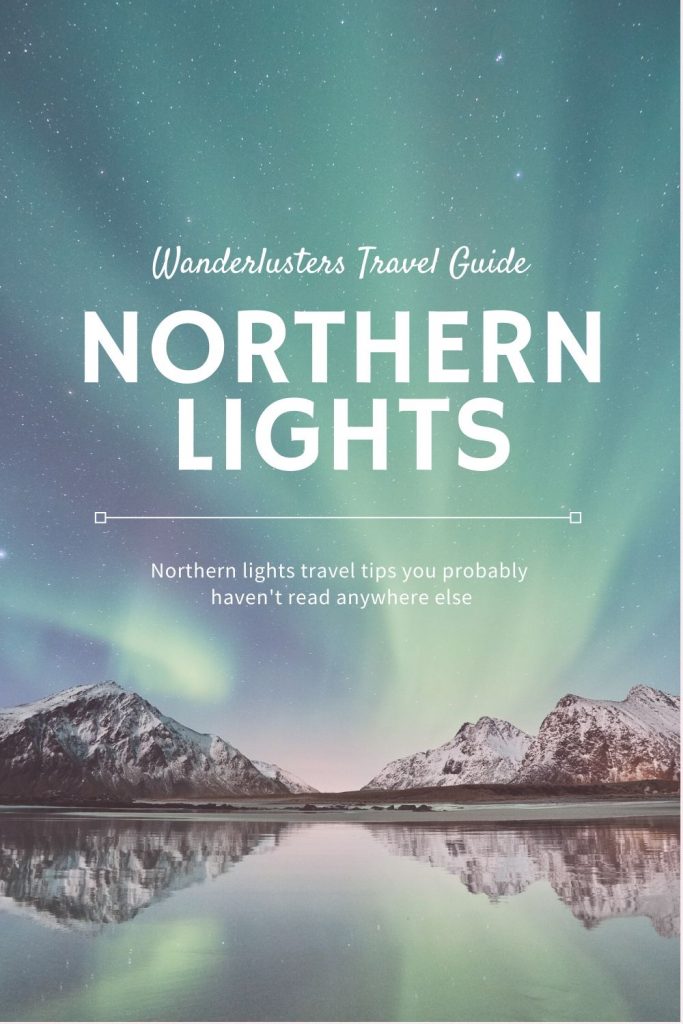
Have you ever seen an aurora in the night’s sky? Share your top northern lights travel tips with us in the comments below.
Featured photo by Jonatan Pie on Unsplash

